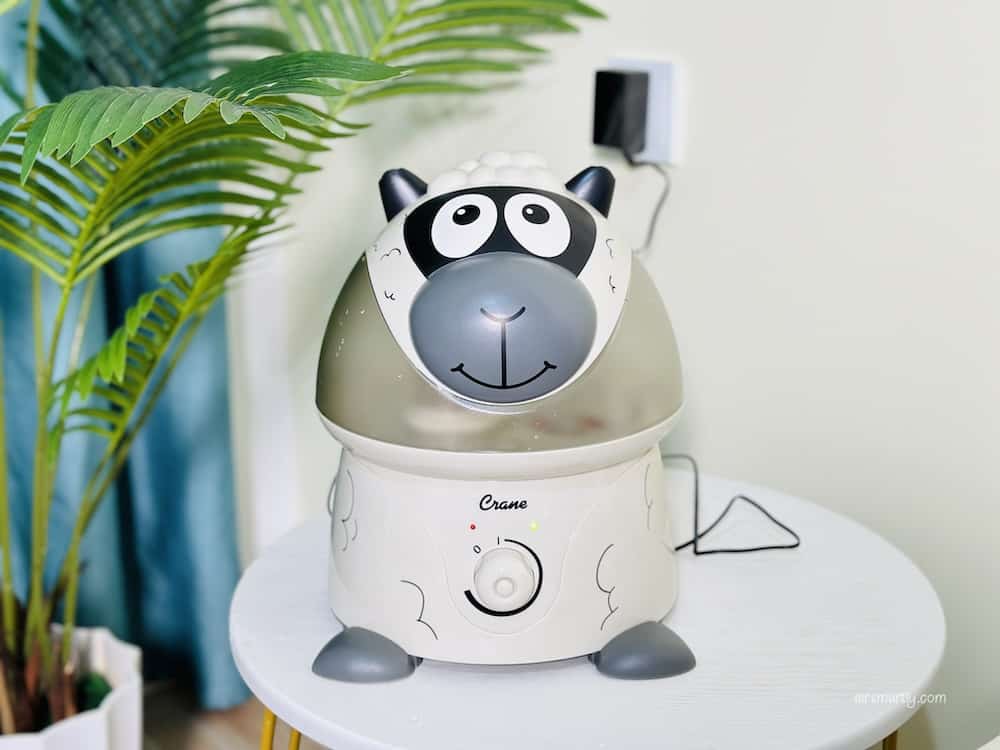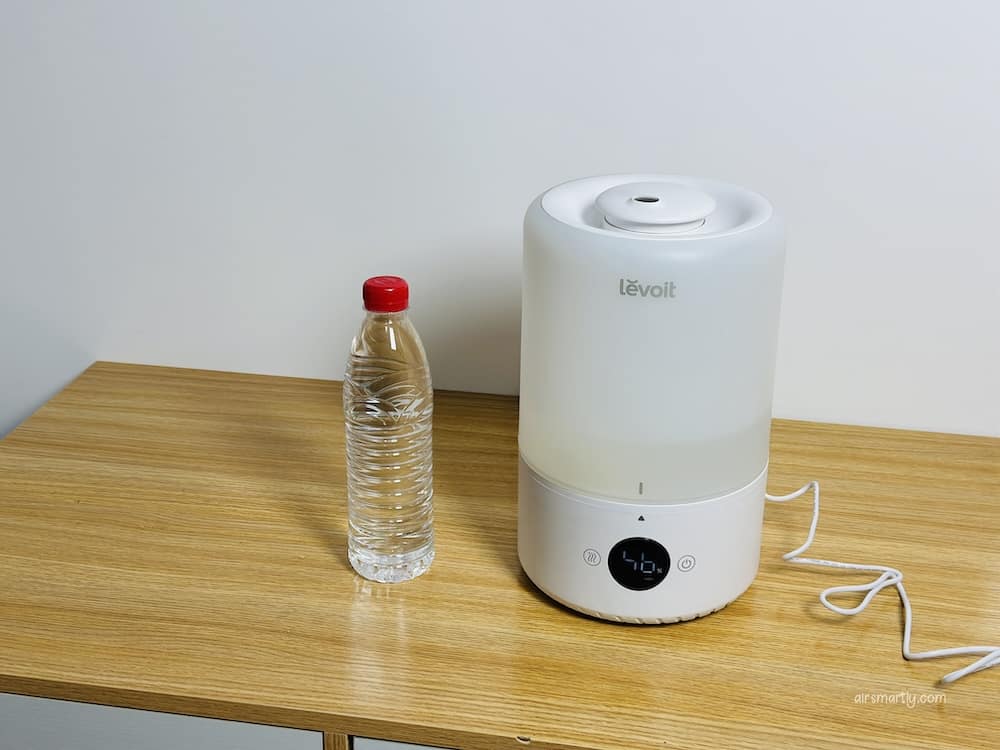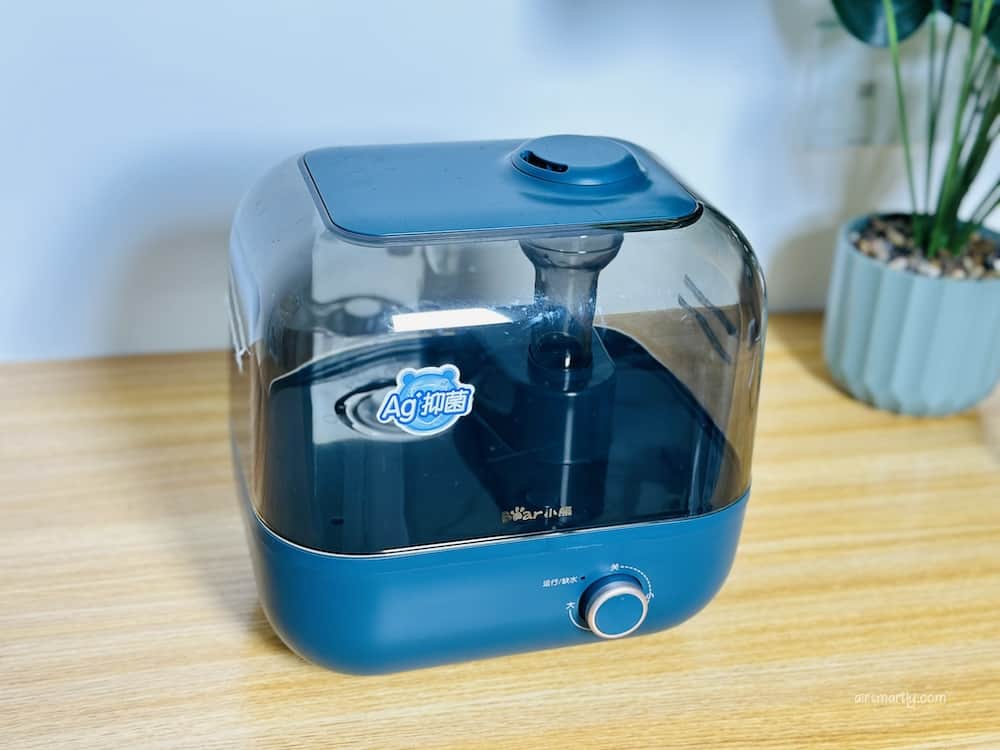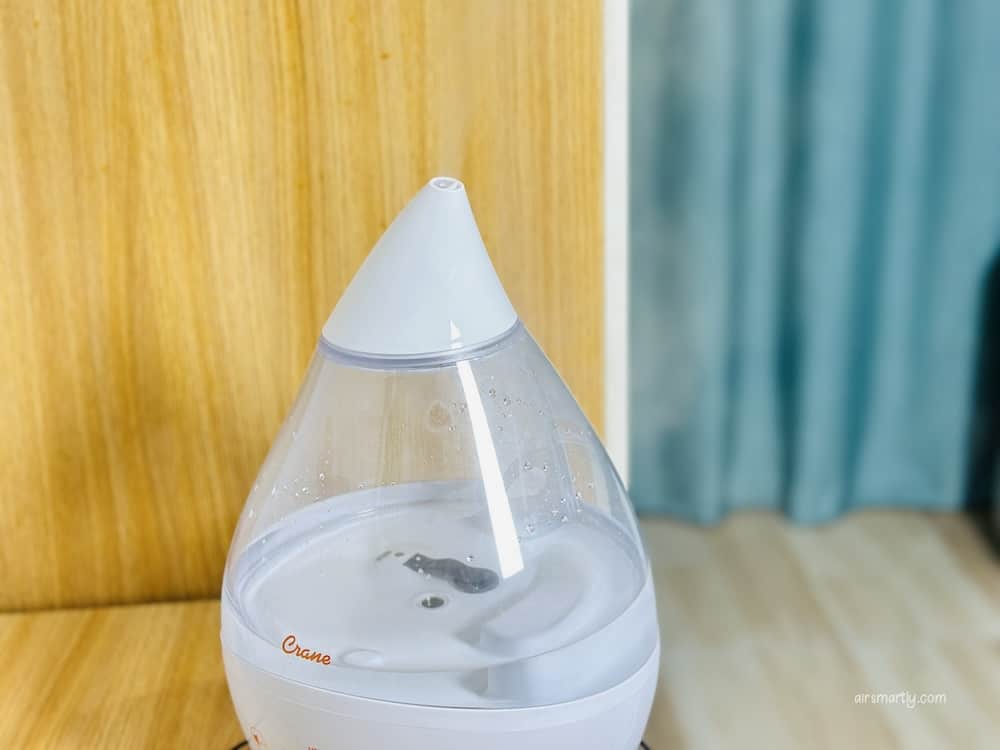A humidifier is a must-have for many people who live in arid regions or have cold and dry winter months. It is easy to use but effective in improving indoor humidity. However, it is also notorious for spreading mold and bacteria into the room.
You have to clean and disinfect the machine regularly to keep bacteria at bay. So what can you put in your humidifier to kill bacteria?
Luckily, I find 8 products that can help you inhibit the growth of bacteria in a humidifier. Keep reading to know what they are?
Note that leaving these bactericides in the tank while running the machine is very dangerous. You should rinse it off after each use.
1. White vinegar
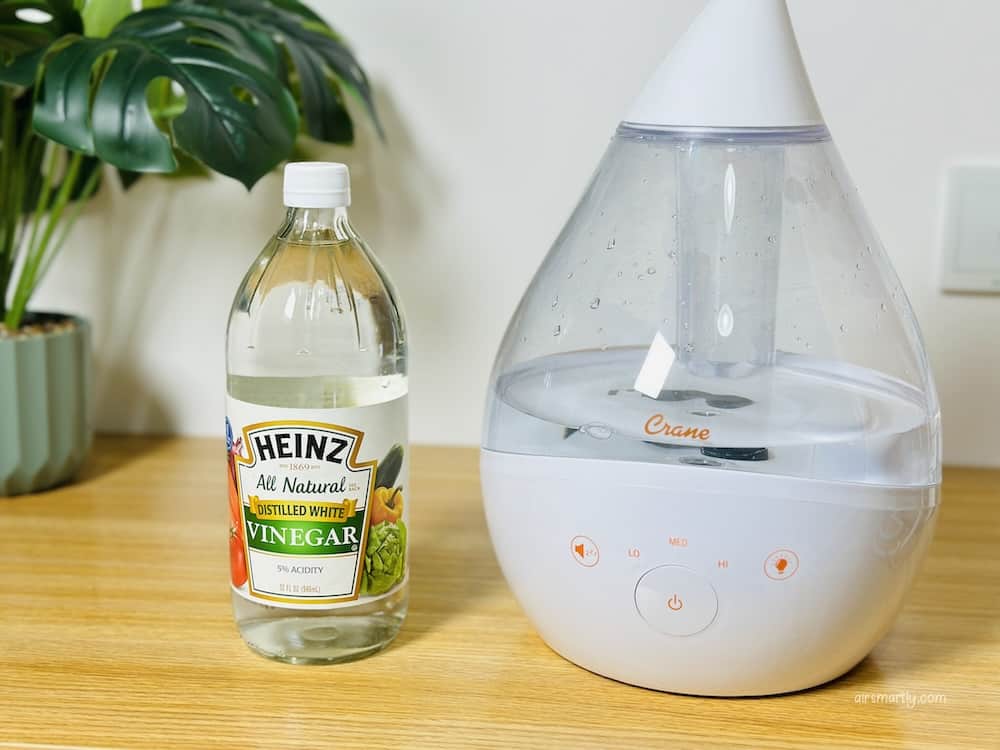
White vinegar is a natural cleanser that you can find in almost every household. The active ingredient acetic acid can kill bacteria and mold and dissolve mineral buildup often seen in humidifier’s water tank.
Compared to other bactericides, white vinegar is safer to use. After all, you can eat it every day.
In fact, many manufacturers also recommend cleaning and disinfecting the device with it. Let it sit in the tank and base for half an hour, and most germs will be killed.
But you can’t assume that it can kill the airborne germs even if it is natural. Running a humidifier with vinegar can irritate the airway and trigger many respiratory issues.
Check more details about vinegar in humidifiers here.
2. Bleach solution
Bleach is a household cleanser that is easy to get. You can not only use it to clean the toilet but also the humidifier.
The bleach kills bacteria by destroying its protein structure. When the structure is altered, the bacteria will not be able to survive.
You have to wear goggles and gloves as bleach is usually very potent. You only need to add one teaspoon of it per gallon of water. Besides, do not let it sit in the device for more than an hour as it will damage the parts.
Remember to rinse it off and make sure the device doesn’t have a smell of bleach.
3. Hydrogen peroxide
Hydrogen peroxide has many uses. You can use it to treat cuts and wounds. You can also put it in your humidifier to clean and disinfect your humidifier.
The power of hydrogen peroxide lies in an extra oxygen molecule it has when compared to water. This oxygen molecule oxidizes, killing bacteria, viruses, and other germs.
Usually, a medical-grade peroxide should be good enough to disinfect the humidifier. Pour two to three cups of peroxide into the water tank. Let it sit for one hour, then rinse it with running cold water.
Except for disinfecting, Peroxide can also remove the limes and other impurities.
4. Rubbing alcohol
While you can’t run a humidifier with alcohol, you can use rubbing alcohol to sterilize it. Rubbing alcohol is very effective as it can kill bacteria within 10 seconds, while peroxide needs 5 minutes to work.
When using rubbing alcohol to kill bacteria in a humidifier, you can soak a soft cloth in alcohol and wipe all the parts—note that you can’t sanitize the humidifier filter with it.
Remember to use water to wash away the remaining alcohol as it is easy to catch fire.
5. Tea tree oil
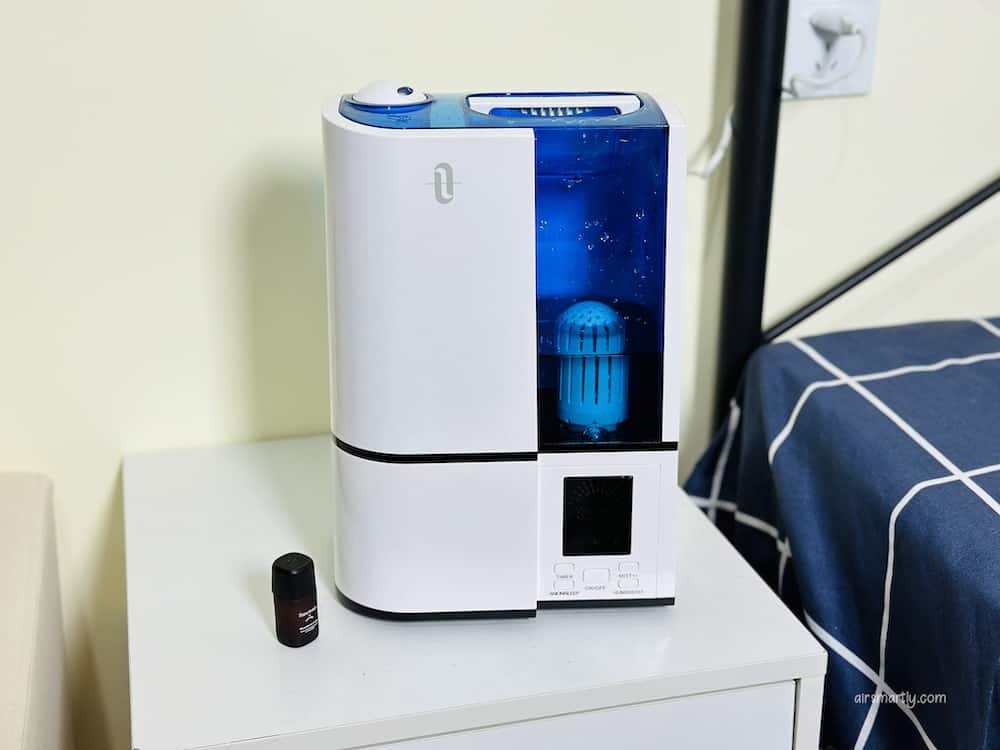
Tea tree oil has antimicrobial properties, so you can put it in your humidifier to kill bacteria. Even though we don’t recommend you to add essential oil to a water tank directly for long-term use, you can use it for disinfection purposes.
After you clean the device, put some tea tree oil on a soft, damp cloth and use it to wipe all the parts of your humidifier. Leave it for half an hour and then rinse it with water.
Some people like to add distilled water in it directly, assuming that the tea tree oil can prevent mold growth, but the effectiveness hasn’t been proved yet.
6. Lemon juice
This is another natural microbicide you can use in a humidifier. While it is not as powerful as other disinfectants, you can use it if your humidifier is clean in general.
Similar to applying tea tree oil, you can squeeze some juice on a damp cloth and then wipe all parts carefully.
Let the lemon juice sit for about 10 minutes, and then rinse the machine with cold running water.
7. Humidifier cleanser
You can find some specific humidifier cleansers and disinfectants on the market. Some are made of natural ingredients, and others don’t.
If you intend to use a humidifier cleanser that will stay in the water for a long time, you should pay close attention to the ingredients since some of them will get into the air and pose health risks to you and your family members.
You should also check with your doctor if you are prone to allergies and suffer from asthma or other respiratory diseases.
8. Humidifier cartridge
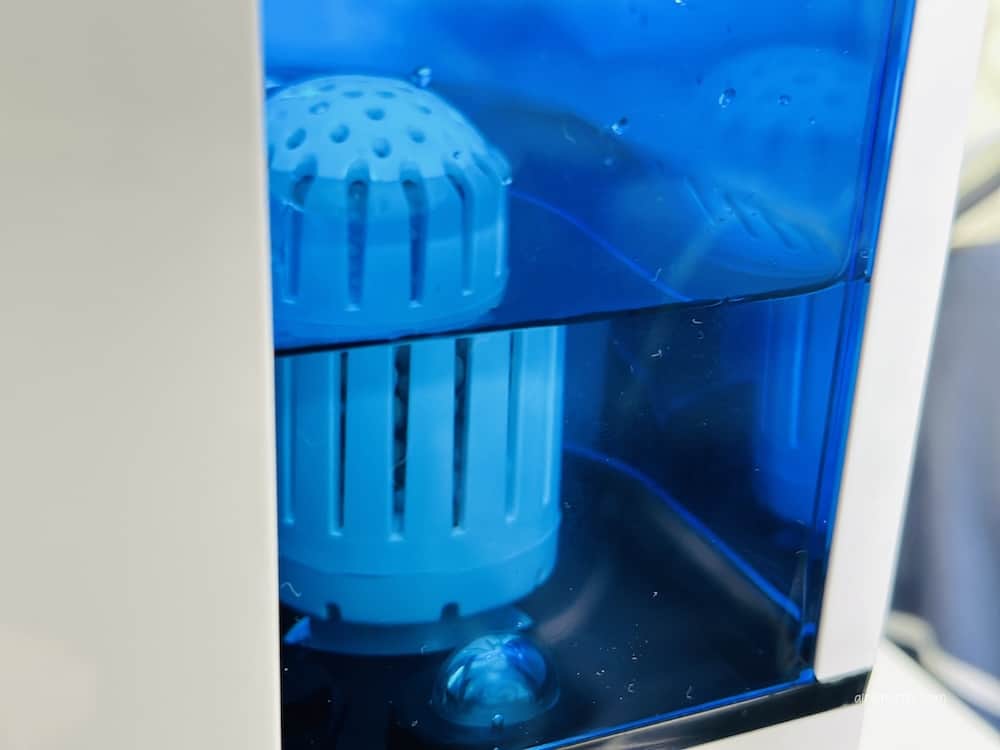
Strictly speaking, humidifier cartridges can’t kill the bacteria directly. Instead, it can demineralize the water and reduce the mineral buildup, which is the food source of mold and bacteria.
When there are fewer mineral deposits in the water, the bacteria will not thrive in the humidifier, and you don’t have to kill them as often as before.
Conclusion
Humidifiers are a great add-on when you live in an arid region, but they have annoying upkeep. If you don’t clean and disinfect it regularly, it will become a breeding ground for bacteria and mold.
There are some natural products you can use to kill the bacteria, such as vinegar, lemon juice, and tea tree oil. There are also some disinfectants in local stores, such as bleach, hydrogen peroxide, and alcohol. You can also directly use humidifier disinfectant.
Some disinfectants contain harmful ingredients, so you should rinse them off before rerunning your humidifier. If you intend to use a humidifier cleanser kept in the water tank, you should check the ingredients carefully to prevent any possible hazards.

